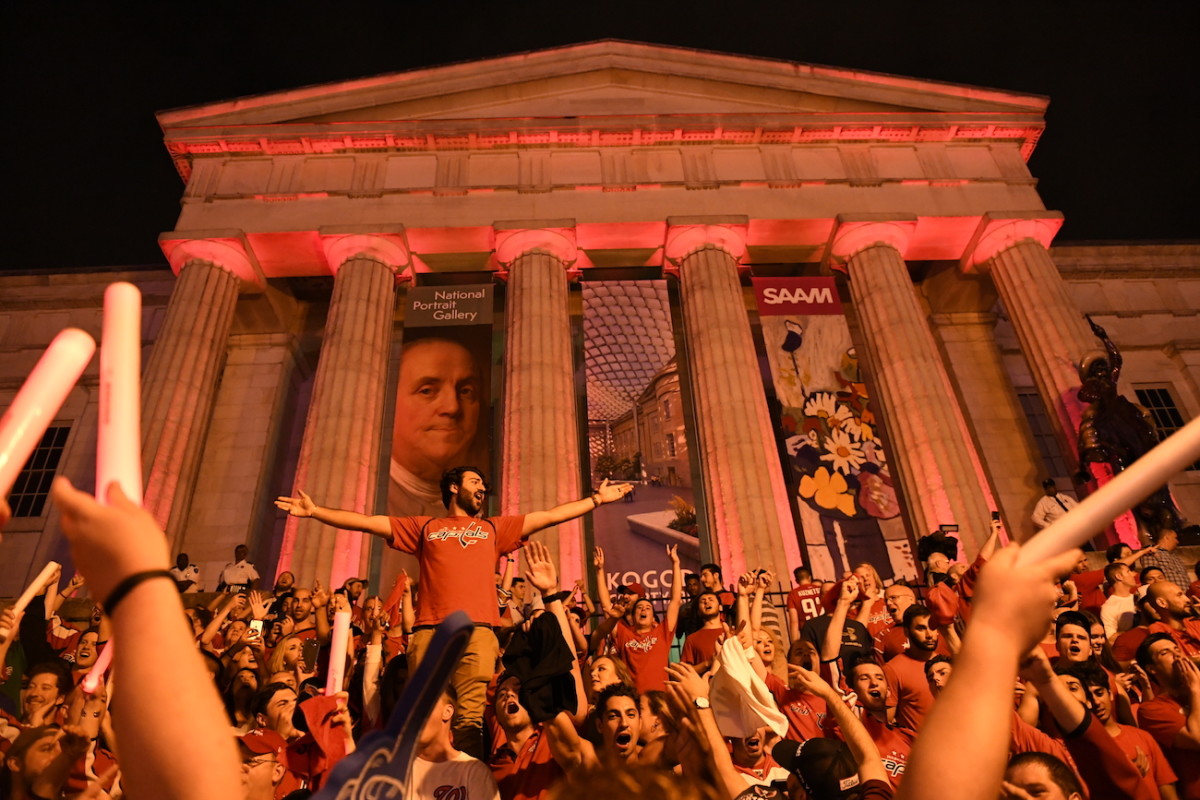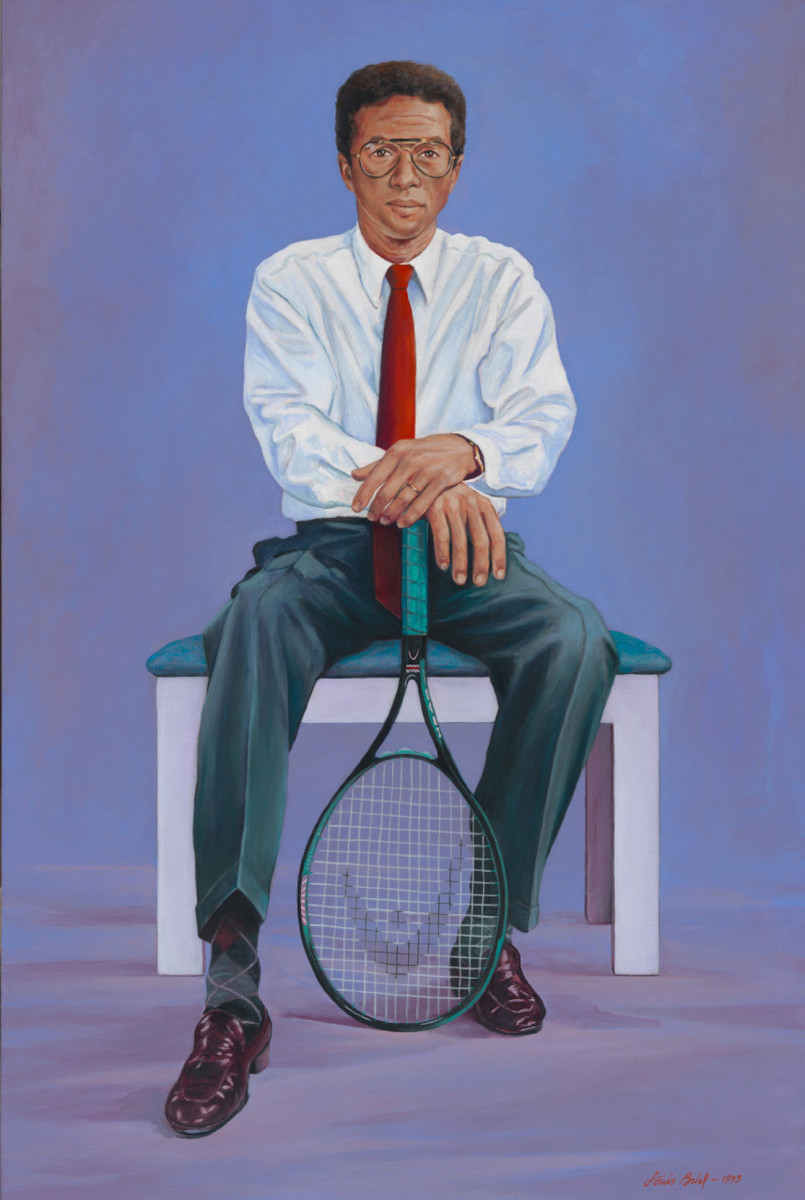Sports Legends Abound at the National Portrait Gallery

During the 2018 NHL playoffs, people who tuned in to the Washington Capitals’ home games were treated to the memorable sight of thousands of hyped-up fans watching their beloved team play on a huge screen on the side of the arena. Some of the best shots were taken of fans crowded on the steps of the Smithsonian National Portrait Gallery, the third-oldest building in the city, which is located right across the street from the Capital One Center.
You may not know that the National Portrait Gallery, home to paintings of our presidents and pictures of some of the most notable figures in history, has an exhibit entirely devoted to sports. Unveiled with the reopening of the museum in 2006, the “Champions” exhibit highlights some of the greatest athletes of all time, not only for what they did on the field, but off it too.
The collection of pieces on display includes legends Muhammad Ali and Jim Brown, trailblazers Babe Didrikson Zaharias and Arthur Ashe, innovator Walter Camp, and champions Mia Hamm and Oscar Robertson. One recent morning, the museum’s historian and curator, James Barber, guided me through this unique exhibit.
“The interest in sports is huge,” noted Barber, when prompted to explain why the museum installed the pieces, “and just by the nature of American culture, if we didn’t include sports there would be a huge gap in interest level.”
The exhibit itself is in the shape of a “U” and features photographs and paintings along the walls and also sculptures, busts, and a paper-maché cast.

According to Barber, because the main source of lighting comes from a skylight, and since the sun is so vicious on art, the museum could not display any original pictures or prints on paper, only “photo dupes.”
Barber highlighted a painting of tennis legend Jimmy Connors, which was one of the 600 original Time magazine covers that were donated to the museum in 1978. The Champions collection includes 13 Time covers, some from the original donation and others that were acquired since.
Some of the other Time originals within the exhibit are a 1985 cover titled “Simply the Best” featuring Wayne Gretzky and Larry Bird, a 1981 cover of baseball manager Billy Martin, and a 1962 cover of golfer Jack Nicklaus.
Barber also pointed out a full-body portrait of tennis star and social activist Arthur Ashe, a Richmond native, by artist Louis Briel. “The city of Richmond wanted to honor Ashe, and part of that celebration was a portrait,” said Barber. Ashe is sitting with his hands on a tennis racket, but Barber pointed out that when Ashe wasn’t able to bring a racket, Briel had to go to a local sports shop to buy a tennis racket just like the one Ashe used.

At the base of the “U” hangs a very large painting depicting the fight between Jess Willard and Jack Dempsey on July 4, 1919, when Dempsey reclaimed the heavyweight title. A placard next to the painting shows a picture of the painting in Dempsey’s restaurant in New York City, and a display case that houses paper-maché casts of his fists.
We went down the other side of the gallery, passing by pictures of legends such as Bobby Hull, Juan Marichal, Wilma Rudolph, Mickey Mantle, and Althea Gibson.
After we concluded the tour of the Champions exhibit, Barber led me to a temporary exhibit on the second floor that he curated himself called “One Year: 1968, An American Odyssey,” which includes works centered around that politically and socially tumultuous year in American history.
One of the sections includes five sports pieces. In front of the wall is a showcase with the February 19, 1968, Sports Illustrated cover of figure skating star Peggy Fleming. On the wall are paintings of Detroit Tigers pitcher Denny McLain and Hall of Fame football coach Vince Lombardi, along with photographs of Ashe’s winning shot in the 1968 U.S. Open and of sprinters Tommie Fleming and John Carlos raising their fists in a Black Power salute while standing on the podium at the 1968 Olympics in Mexico City.
A building that gained fame for what was happening in sports outside its walls contains a treasure trove of sports art within and is definitely worth a visit if you find your way to D.C.!
Top photograph by Matailong Du/National Portrait Gallery, Smithsonian Institution
